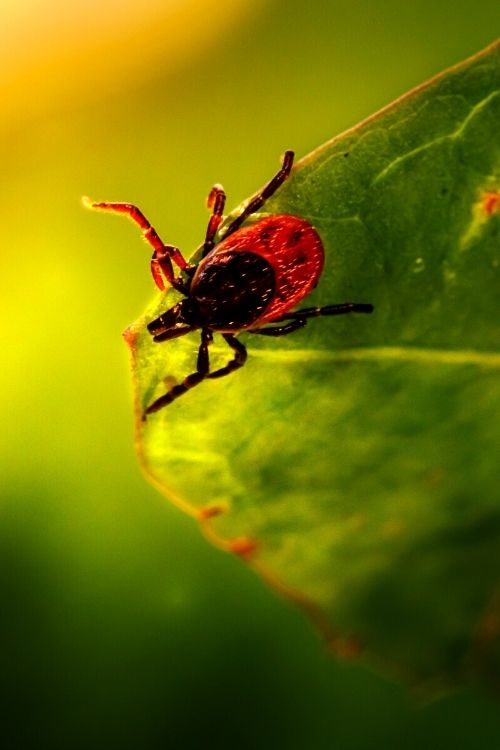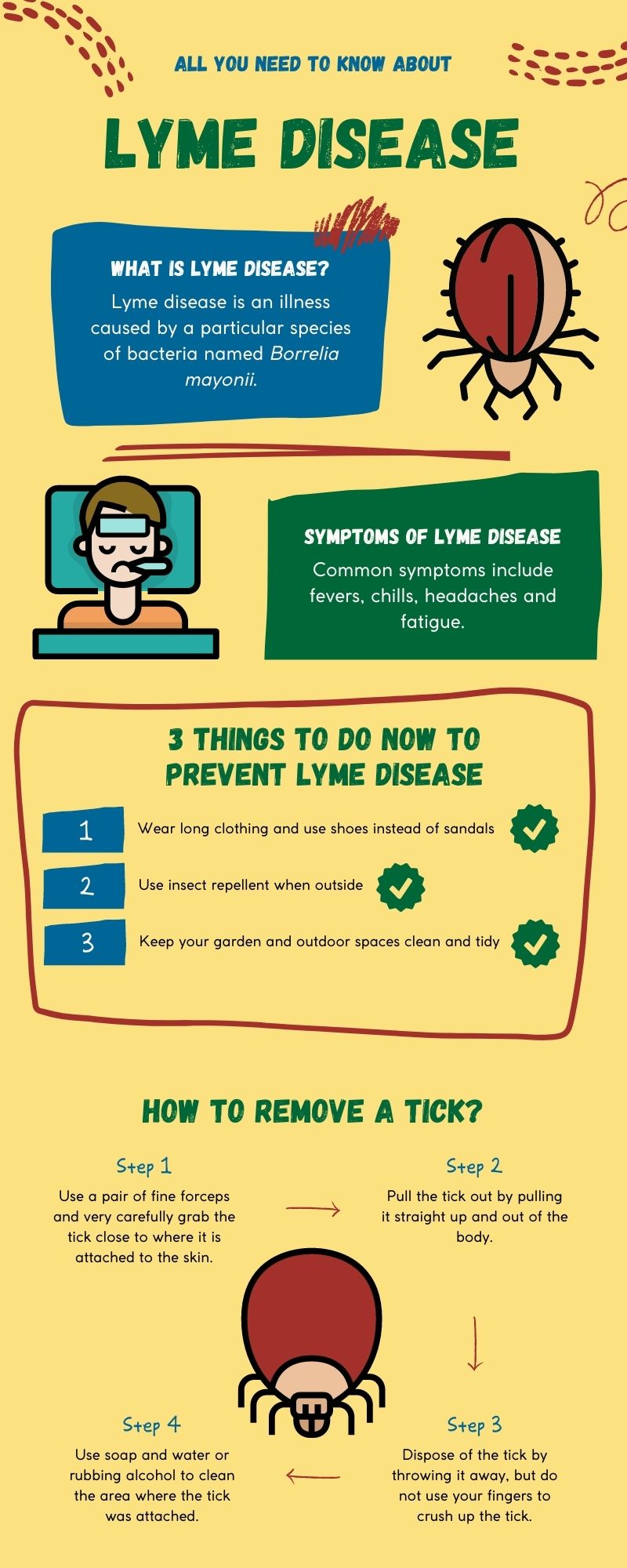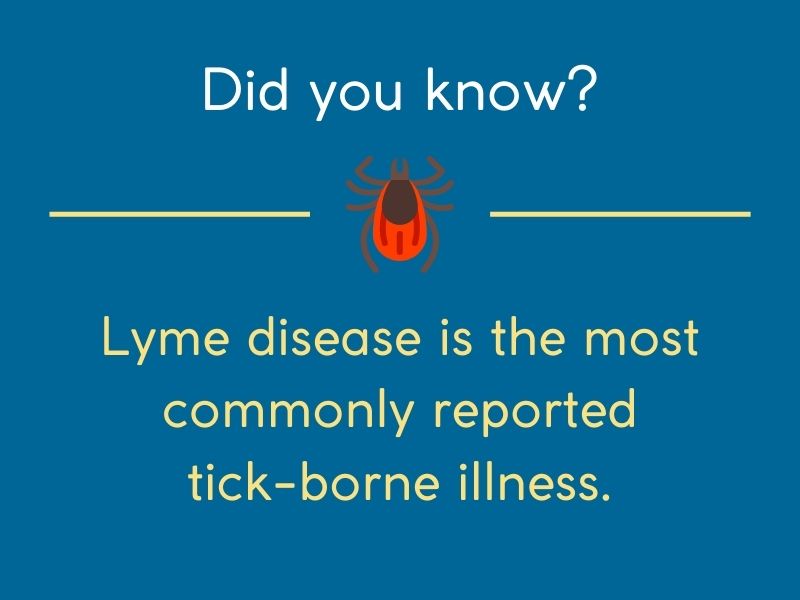The Ultimate Guide to Preventing Lyme Disease
Ticks

Lyme disease is an illness caused by a particular species of bacteria named Borrelia mayonii. The illness can be very debilitating and sometimes people don’t realize they have been infected, particularly since many of the symptoms are quite vague.
It is helpful to know details on how the disease is transmitted because this helps in learning what you can do to prevent infection. There are several steps you can take to help prevent yourself from getting Lyme disease. Read further to learn about what you can do to avoid this disease.
How Lyme Disease is Transmitted
The bacteria that cause Lyme disease are carried by ticks, which then transmit the bacteria when they bite a host.
Humans can become infected when bitten by a tick that is carrying the bacteria.
The ticks are known to harbour the bacteria are called deer ticks. The bacteria is not actually found in the deer but ticks carrying the bacteria may attach to deer, bringing them closer to people.
As it turns out, the Borrelia bacteria that causes the illness is found in mice. It is when larval ticks feed on mice that they become infected and end up as vectors of the bacteria.


Lyme disease is most commonly associated with the United States because it was first discovered there in the town of Lyme, Connecticut.
However, it is now known that Lyme disease is found all over the world including in Singapore where other tick species can carry this bacteria, and other disease-causing organisms.
Ticks in Singapore
There are at least 14 species of ticks that have been recorded in Singapore.
At least one of these species is known to carry the bacteria that causes Lyme disease. But more research is needed on the various tick species in Singapore.
The tick species Ixodes granulatus can potentially transmit Lyme disease in Singapore. It is, therefore important to be aware of the disease and some of the symptoms that are associated with Lyme disease.

Lyme Disease Symptoms
Awareness of Lyme disease symptoms is useful in diagnosing and detecting the illness in a population. There are many signs of Lyme disease including the following listed below:
- Fever and chills
- Headache and fatigue
- A red bulls-eye type rash develops with Lyme disease. This rash can grow up to 30 cm in size.
- Joint pain similar to what someone with arthritis experiences
- Pain in the bones and muscles
- Facial drooping knew as palsy
- Feeling dizzy
- Shortness of breath
- Heart palpitations
It is important to understand that many of these symptoms are vague and could indicate a different health problem, but if you have the bulls-eye rash along with these other symptoms then you could very well have Lyme disease.

The Rash of Lyme Disease
A circle-shaped rash may occur where the tick bites you. This can be a Lyme disease bite if the tick is infected. In many people, the rash from Lyme disease increases in size and takes on the appearance of a bulls-eye.
The rash does not hurt and is often not even itchy so you may not realize right away that you have the disease.
People can sometimes have many rashes develop on the body as the bacteria spread and the infection progresses.
Not every person with Lyme disease develops a noticeable bulls-eye rash or multiple rashes. If you have been bitten by a tick, though, you should look for a rash and see your doctor if other symptoms develop.
Pro tip: Wear long clothes.
Lyme Disease Prevention
To keep yourself safe you need to avoid getting bitten by ticks in the first place. Preventing contact with ticks and other vectors of disease is important. This is important because ticks don’t only carry Lyme disease but other bacteria as well.
Many of the steps for preventing Lyme disease rely on behaviour that helps reduce your contact with ticks that could be carrying the bacteria.
We have some tips for preventing Lyme disease that we have listed below:
- Wear long pants and long shirts if walking in thick grass and bush.
- Wear long socks and tuck your long pants into your socks.
- Do not walk barefoot through tall grass and wooded regions.
- Wear closed shoes instead of sandals or open footwear.
- Wear insect repellant with at least 0.5% permethrin in, particularly if you are planning on walking through tall grass and spending a lot of time outside.
- Apply insect repellant to your clothing before going for a walk into the grass and woods.
- Check your clothing and body often for signs of ticks you may have picked up, especially if you have been out in the words or walking among long grass.
- Keep your garden clear of areas of thick bush, long grass, and clumps of debris where ticks and mice may be found.
- Immediately remove any ticks that you find on your clothing or body.
- Check your pets on a regular basis for signs of ticks and remove these ticks.
How to Safely Remove Ticks
There is a specific way to remove a tick from the body to prevent it from injecting more saliva and bacteria into the body. You can use this same method for removing ticks from pet animals like dogs.
Steps to remove a tick from the body:
- Use a pair of fine forceps and very carefully grab the tick close to where it is attached to the skin.
- Pull the tick out by pulling it straight up and out of the body.
- Dispose of the tick by throwing it away, but do not use your fingers to crush up the tick.
- Use soap and water or rubbing alcohol to clean the area where the tick was attached. This may help to remove any of the saliva or bacteria from the wound.
Remember to take steps to avoid contact with ticks as much as possible to help prevent you from catching Lyme disease.
Frequently Asked Questions
You can get infected when you get bitten by ticks that carry the Lyme disease bacteria.
If you have Lyme disease, you may feel any of the following symptoms at first: Rashes, fevers, headaches and fatigue. When left untreated, more serious symptoms can occur.
If Lyme disease is detected at an early stage, treatment can cure the disease.

